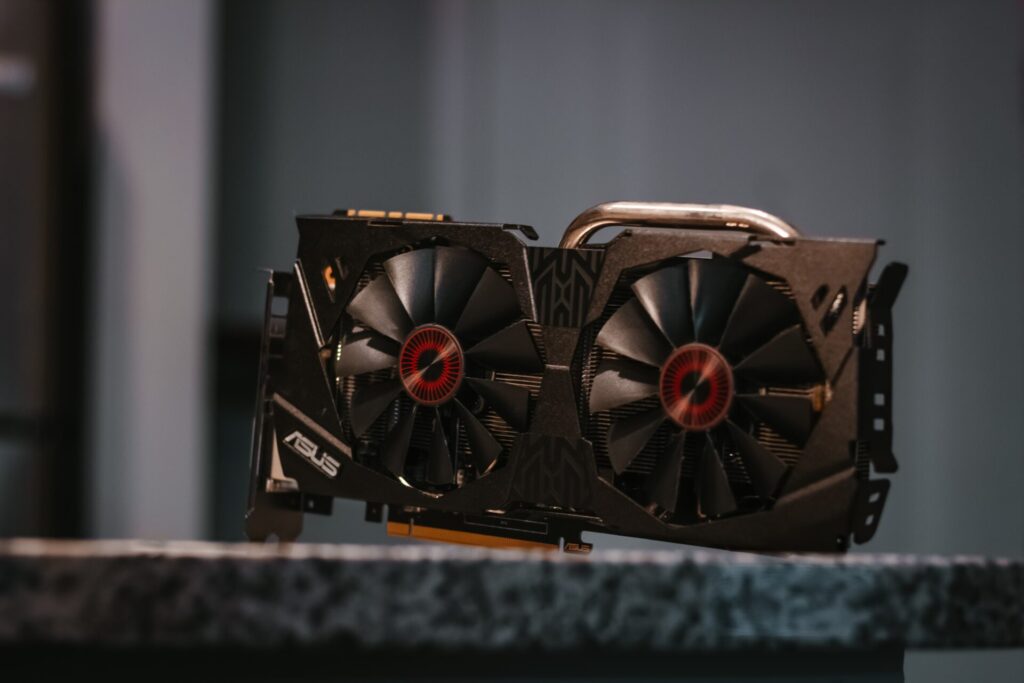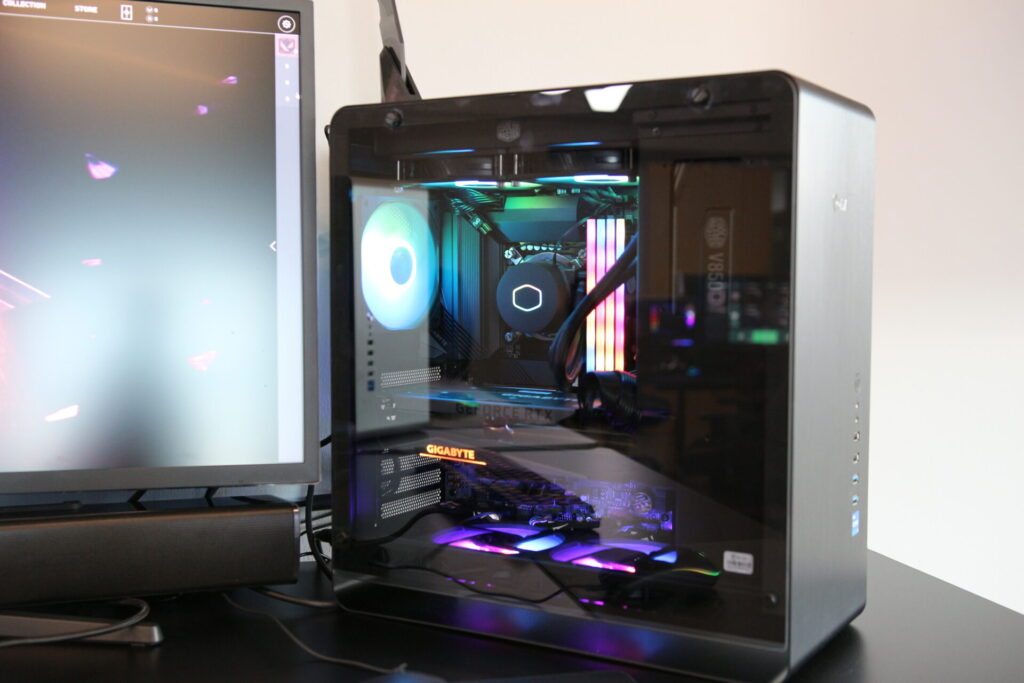With the ongoing advancements in gaming technology, it’s becoming increasingly important to choose the right gaming PC components. One critical aspect to consider is the Video RAM (VRAM) capacity of your dedicated graphics card. As AMD and NVIDIA continue to compete, they’re focusing on providing GPUs with various VRAM capacities. In this article, we’ll explore the significance of VRAM for your gaming desktop, discuss recent industry news, and guide you in selecting the perfect custom PC with adequate VRAM for your video game.
1. Understanding VRAM and Its Role in Gaming PC
a) What is VRAM and its functions
Video RAM (VRAM) is a crucial component in a gaming PC. Essentially, it’s the memory used by your graphics card to store the data required to render images on your screen. Consequently, VRAM serves as a high-speed buffer that enables the GPU to access data quickly.
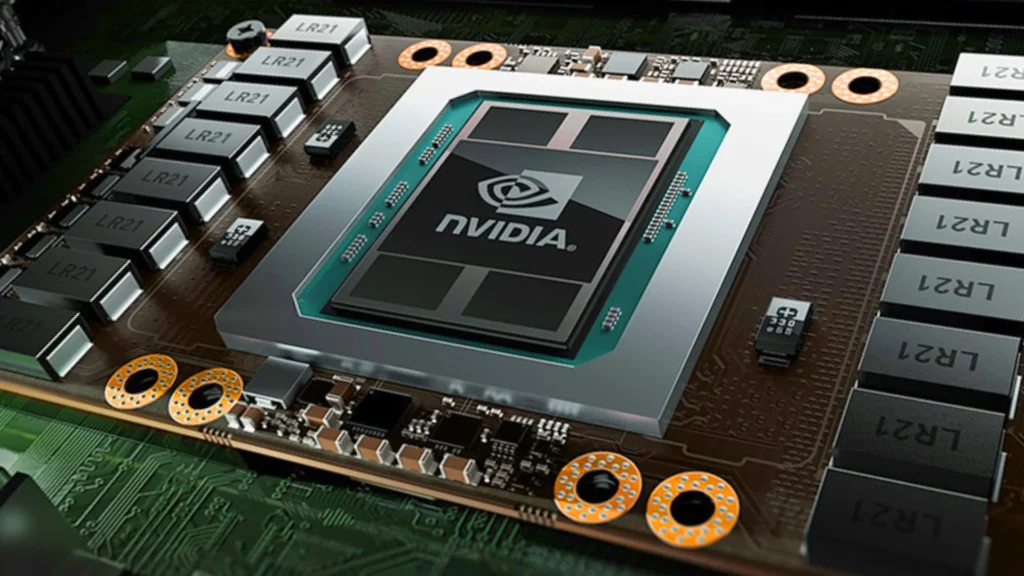
The amount of VRAM determines the quality and resolution of graphics the GPU can handle. For instance, higher VRAM capacities allow for smoother gameplay and better graphics performance, especially in demanding games with advanced display settings.
b) How VRAM impacts gaming performance, especially at higher resolutions
VRAM plays a vital role in gaming performance. It directly impacts the textures, resolution, and anti-aliasing in games. Furthermore, higher resolutions such as 4K graphics settings require more VRAM to handle larger textures and increased details.
As a result, gaming desktop with limited VRAM might experience stuttering or a decrease in frame rates when running games at high settings. In contrast, PCs with ample VRAM can maintain smooth gameplay and high-quality integrated graphics, even in demanding situations.
c) The difference between GDDR and HBM VRAM types
There are two primary types of VRAM: GDDR and HBM. GDDR (Graphics Double Data Rate) is the most common type, and GDDR6X is the latest iteration. GDDR6X boasts higher bandwidth and improved power efficiency compared to its predecessors.
On the other hand, HBM (High Bandwidth Memory) is an alternative VRAM technology that offers even higher bandwidth and lower power consumption. HBM achieves this by stacking memory chips vertically, resulting in a smaller footprint. However, HBM is typically more expensive and less common in consumer gaming PC.
2. VRAM Requirements for Modern Gaming PC
a) The growing demand for higher VRAM capacity due to increasing game requirements
With the advancement of game graphics, the demand for higher VRAM capacity in gaming PCs has grown significantly. Modern games often feature complex textures, detailed models, and advanced visual effects that require more memory to render.
Hence, having a sufficient amount of VRAM is crucial for a smooth gaming experience. Insufficient VRAM can lead to a drop in performance, such as stuttering, frame rate drops, and texture pop-ins, which can hamper the overall gaming experience.
b) How to determine the right amount of VRAM for your gaming PC based on resolutions (1080p, 1440p, 4K)
The required VRAM for a gaming PC varies based on the resolution at which you plan to play games. With 1080p gaming, 4GB to 6GB of VRAM is typically sufficient. When it comes to 1440p gaming, 6GB to 8GB of VRAM is recommended. And those aiming for 4K gaming, it’s advisable to have at least 8GB to 12GB of VRAM.
In a benchmark, the Resident Evil 4 remake showcased VRAM usage when played at a 3840×2160 resolution with ray tracing enabled. The game consumed 11,837 MB of VRAM, illustrating the significant demand for memory in modern AAA titles, especially when played at 4K with advanced graphical features like ray tracing.
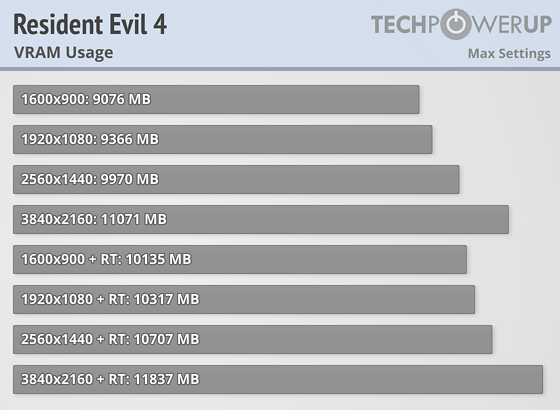
It’s essential to consider the type of games you want to play and their VRAM requirements. Furthermore, always check the recommended VRAM capacities from the game developers for an optimal performance for gaming.
c) AMD’s recommended VRAM capacities for different gaming experiences and resolutions
AMD has provided a guide for VRAM capacities based on different gaming experiences and resolutions. For 1080p gaming, AMD recommends using 6600-series GPUs with 8GB of RAM. For 1440p gaming, it’s recommended to use 6700-series GPUs with 12GB of RAM. Finally, for 4K gaming, AMD suggests using 6800/69xx-series GPUs with 16GB of RAM. By following these guidelines, gamers can enjoy optimal gaming experiences without experiencing lags or other issues caused by insufficient VRAM.
These recommendations serve as a guideline for choosing the right GPU and VRAM capacity for your gaming PC based on your desired resolution and gaming experience.
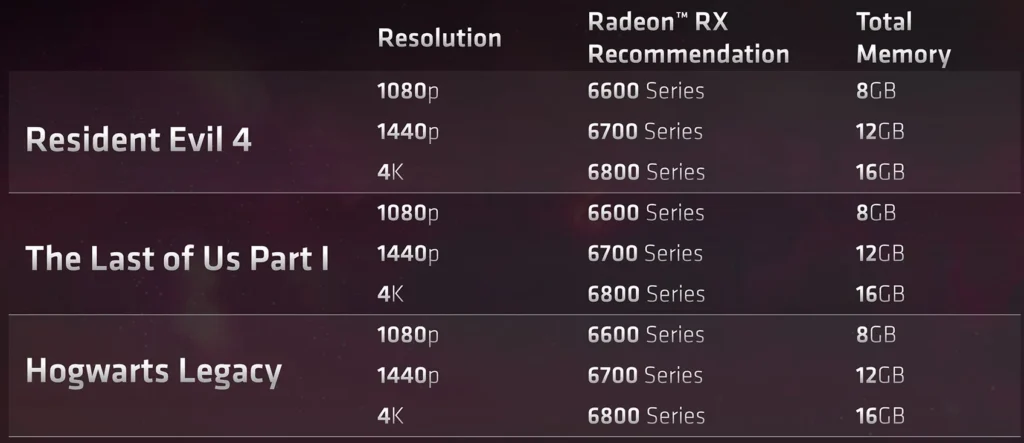
3. AMD’s Critique of NVIDIA’s RTX 4070 VRAM Allocation
In a Tom’s Hardware news article – AMD Goads Nvidia Over Stingy VRAM Ahead of RTX 4070 Launch, AMD criticized NVIDIA’s RTX 4070 for its VRAM allocation, claiming that it’s insufficient for modern gaming requirements. The article discusses AMD’s assertion that games, especially at 4K resolution, demand more VRAM than what NVIDIA’s upcoming GPU offers.
a) AMD’s stance on the importance of VRAM for gaming at 4K, especially with ray tracing
AMD believes that 12GB of VRAM, as expected in the NVIDIA RTX 4070, is not enough for gaming at 4K, particularly with ray tracing enabled. To support this claim, AMD shared benchmark results for their GPUs at 4K resolution, highlighting the importance of higher VRAM capacities.
AMD argues that GPUs with 16GB of VRAM, like their 6800/69xx-series, provide a better gaming experience at 4K. In addition, they emphasize the need for more VRAM when using advanced graphical features such as ray tracing.
b) Comparing AMD and NVIDIA GPUs’ VRAM offerings
AMD’s GPUs are known for offering generous amounts of VRAM at competitive price points. For instance, AMD’s 6800/69xx-series GPUs come with 16GB of VRAM. Meanwhile, NVIDIA’s RTX 4070 features 12GB of GDDR6X VRAM, which AMD claims is insufficient for 4K gaming with ray tracing.
However, it’s worth noting that for now, the RTX 4070 is currently the cheapest Nvidia GPU in the RTX 40 series. Its price is about half that of the RX 6800/6900 XT.
-
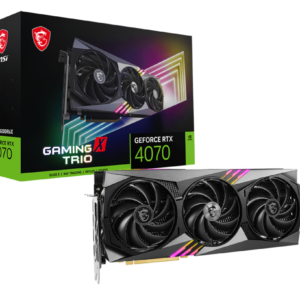 MSI GeForce RTX 4070 GAMING X TRIO 12G$915.00 w/GST
MSI GeForce RTX 4070 GAMING X TRIO 12G$915.00 w/GST -
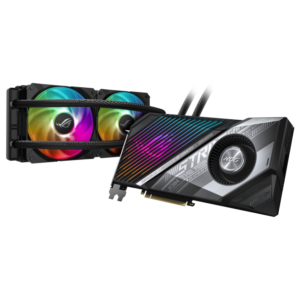 ASUS ROG-STRIX-LC-RX6800XT-O16G-GAMING (3Y)$2,169.00 w/GST
ASUS ROG-STRIX-LC-RX6800XT-O16G-GAMING (3Y)$2,169.00 w/GST -
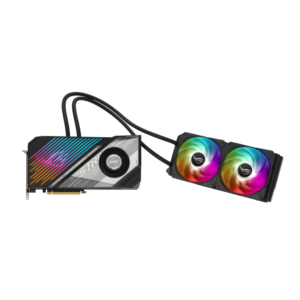 ASUS ROG-STRIX-LC-RX6900XT-T16G-GAMING$2,429.00 w/GST
ASUS ROG-STRIX-LC-RX6900XT-T16G-GAMING$2,429.00 w/GST
When choosing a gaming PC, it’s essential to consider not only the VRAM capacity but also the overall performance and value offered by each GPU. Comparing the features and price points of both AMD and NVIDIA GPUs will help you make an informed decision that meets your gaming requirements.
4. VRAM Allocation in Lower-Tier GPUs and Future Considerations
a) The challenges of VRAM allocation in lower-tier GPUs
Allocating VRAM in lower-tier GPUs presents challenges for both AMD and NVIDIA. As the demand for higher VRAM capacity increases, it becomes more difficult to balance performance, power consumption, and price. Consequently, manufacturers must carefully consider VRAM allocation for these GPUs to ensure they can deliver a satisfying gaming experience on a budget.
In the case of the upcoming NVIDIA RTX 4060 and RTX 4050, there are concerns about the potential memory bus size, which could impact VRAM capacities. Similar considerations apply to AMD’s lower-tier RX 7000-series GPUs.
b) Factors beyond VRAM capacity that affect gaming performance
While VRAM capacity is crucial for a gaming PC, other factors also contribute to the overall gaming performance. These include cache sizes, memory bus width, and architectural features. For example, NVIDIA’s RTX 30-series GPUs have managed to keep pace with AMD’s RX 6000-series GPUs in rasterization games, despite having lower VRAM capacities.
Moreover, NVIDIA offers superior ray tracing hardware and features like DLSS, which boost AI performance in areas such as Stable Diffusion. Therefore, it’s essential to consider the complete package a GPU offers when selecting the best gaming PC for your needs.
5. Choosing the DRight Gaming PC with Adequate VRAM
a) Assessing your gaming requirements and preferences
When selecting a gaming PC, it’s important to assess your gaming requirements and preferences. Consider the types of games you’ll be playing, the resolutions you’d like to target, and whether you want to enable advanced features like ray tracing. By doing so, you’ll be better equipped to choose a gaming PC with the right VRAM capacity and GPU performance.
For instance, if you primarily play eSports titles at 1080p, you might not need a high-end GPU with massive VRAM. Conversely, if you’re interested in playing the latest AAA titles at 4K with ray tracing, a more powerful GPU with ample VRAM is essential.
b) Comparing different GPU offerings and their VRAM capacities
When choosing or custom a gaming desktop, it’s crucial to compare different GPU offerings and their VRAM capacities. Look at the specifications, performance benchmarks, and price points of GPUs from both AMD and NVIDIA. Keep in mind that having more VRAM doesn’t always guarantee better performance; the GPU’s architecture and other features play a significant role as well.
Comparing GPUs and their VRAM capacities helps you choose a graphics card that suits your needs and budget. This informed decision can be aligned with your gaming requirements.
c) Future-proofing your PC by investing in higher VRAM capacity
Investing in a gaming desktop with a higher VRAM capacity can help future-proof your setup. As games continue to evolve, their demand for VRAM will likely increase, which means having ample VRAM will enable you to enjoy smooth gameplay and high-quality visuals for longer.
While you may not need the extra VRAM immediately, having it available can save you from needing to upgrade your GPU sooner than you’d like. By considering your long-term gaming needs and selecting a gaming PC with adequate VRAM, you’ll be prepared for the exciting gaming experiences that lie ahead.
6. Does shared system VRAM help?
You might notice that going into advance graphics card properties you can see that there are a few labels. Namely, the total available graphics memory, the dedicated video memory and the shared system memory. So what is shared system memory?

Modern system design allows the main system memory to be used by the GPU to store texture information.
So does this help alleviate the insufficient dedicated video memory issue? To a certain extent it helps but system memory is far slower than dedicated video memory.
On a fast PC with DDR5 – 6000MHz memory, with dual channel memory, the RAM provides the system with 96GB/s of memory bandwidth. You can refer to our article here for reference to DDR5, DDR4 and DDR3 bandwidth.
On the other hand, a 3080 Ti GPU comes with 12GB of GDDR6X memory and a 384-bit memory interface for 912GB/s of memory bandwidth. The difference works out to 816 GB/s slower memory bandwidth on DDR5 system memory as compared to the dedicated video memory.
For a slower PC with low end graphics card, the system memory does helps. But for highend 4K gaming, it really doesn’t helps.
Conclusion
In conclusion, choosing the right gaming PC is crucial. It ensures an optimal gaming experience. First, consider your gaming preferences. Then, compare AMD and NVIDIA GPU offerings. This way, you can invest in a future-proof setup. As a result, you’ll enjoy smooth gameplay and stunning visuals for years.
Games continue to evolve and demand more VRAM. Consequently, staying informed on the latest industry news is important. Make informed decisions when building or upgrading your gaming PC.
For custom-built gaming PCs in Singapore, Volta PC offers a simplified process to ensure that your setup meets your preferences and needs. Their expertise in components such as VRAM, GPU, and CPU guarantees that your gaming setup will perform at its best, providing you with the ultimate gaming experience.
